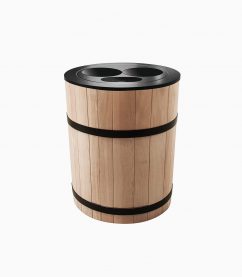Floating stock is calculated by taking outstanding shares and subtracting restricted shares. Restricted stock are shares that are owned by company insiders, employees and key shareholders that are under temporary restriction, and therefore cannot be traded. Shares outstanding are the stock that is held by a company’s shareholders on the open market. Along with individual shareholders, this includes restricted shares that are held by a company’s officers and institutional investors.
Shares Outstanding
When you look a little closer at the quotes for a company’s stock, there may be some obscure terms you’ve never encountered. For instance, restricted shares refer to a company’s issued stock that cannot be bought or sold without special permission by the SEC. Often, this type of stock is given to insiders as part of their salaries or as additional benefits. This refers average accounts receivable calculation to a company’s shares that are freely bought and sold without restrictions by the public. Denoting the greatest proportion of stocks trading on the exchanges, the float consists of regular shares that many of us will hear or read about in the news. If there is a difference between the number of shares issued and outstanding, the difference is treasury stock.
What about secondary stock offerings?
Outstanding shares of stock is the kind of stock issued by the company that is owned by investors, rather than by corporations themselves. Whether potential shares are considered anti-dilutive depends on the period. Company A might post a loss in the first quarter, and report a diluted share count of 100 million — but post a profit for the year, with a diluted share count more than twice as high. For a loss-making company, the diluted share count will reduce loss per share, since the net loss is being spread over a larger amount of shares. Options and warrants are one aspect of the difference between basic shares outstanding and diluted shares outstanding.
How to Find Number of Shares Outstanding
Convertible debt is treated on an “as-converted” basis if the company’s stock is trading above the conversion price. Assume that Company A has 100 million shares outstanding and a trading price of $10. It also has 10 million stock options outstanding with an exercise price of $5.
The Basics of Outstanding Shares and the Float
They initially sell a set number of shares to investors, and then those same shares can be traded among investors on a secondary market. Conversely, the outstanding number of shares will decrease if the company buys back some of its issued shares through a share repurchase program. There are inherent risks involved with investing in the stock market, including the loss of your investment. Once you know how to calculate the outstanding shares, https://www.online-accounting.net/business-budget-business-car-rental/ you can use this number to calculate a number of valuation metrics, or measures of a company’s performance and future earnings potential. Preferred stock is a special class of shares that is generally considered a hybrid instrument, including properties of both a debt and equity instrument. Preferred stocks are higher ranking than common stock, but also subordinate to bonds in terms of claim, or rights to their share of the company’s assets.
A company’s public float is often expressed as a figure or a percentage of the company’s total outstanding shares. For example, if a company has 10 million shares outstanding and its CEO holds 2 million of those, the company has 8 million floating shares, or 80 percent float. Another way for ownership to be projected is by measuring the issued and authorized stocks. This approach, called the “working model” calculation, forecasts potential changes in shareholder positions based on the total number of shares a company may issue, along with those already issued. It’s thus a speculative view of how ownership could evolve if the company fully uses its authorized share capital. It’s important all board members use the same calculation when making decisions or plans for the business to maintain consistency.
Outstanding shares decrease if the company buys back its shares under a share repurchase program. Outstanding shares are all the shares issued and sold by a company that are not held by the company itself. Outstanding shares include a company’s common stock held by individual investors, institutional investors and restricted shares held by company officers and insiders. The category does not include treasury stock, which is the company’s own stock held by the company.
This number is also used to calculate several key financial metrics, so it’s important to understand how to calculate outstanding shares. Outstanding shares are one of three classifications of the share count. Issued shares refer to those shares issued by the company over time — yet, https://www.online-accounting.net/ unlike outstanding shares, the number of issued shares includes shares repurchased by the company and held as treasury stock. Knowing the number of outstanding shares is important for determining a company’s market capitalization (market cap), which measures a company’s total value.
- Many of the financial ratios used in the fundamental analysis include terms like outstanding shares and the float.
- Issued shares are the subset of authorized shares sold and held by the shareholders of a company, whether they are insiders, institutional investors, or the general public.
- Shares outstanding are used to determine a company’s market capitalization, i.e. the total value of a company’s equity, or equity value.
- While a company has a certain number of outstanding shares, not all of those shares are available for trading, since they may be closely held by some (large) investors.
- This approach, called the “working model” calculation, forecasts potential changes in shareholder positions based on the total number of shares a company may issue, along with those already issued.
You can find shares outstanding at the top of a company’s 10-Q or 10-K filing. Evaluating the trend of this number provides useful insights to investors. Importantly, the number of shares outstanding is dynamic and fluctuates over time. When you buy stock in a company, you are buying an ownership stake, which is issued as a share of stock.
Common stock is the main class of stock that the company issues to investors. Investors who hold common stock exercise control by being able to vote on corporate policy and electing the company’s board of directors. The balance sheet is a financial statement issued by the company that provides a full accounting of the company’s assets, liabilities, and shareholder’s equity at a particular moment in time. In other words, the balance sheet is a snapshot of what a company owns, what it owes, and the total amount that has been invested by shareholders.
Generally, you won’t need to calculate this number yourself and it will be listed for you on a company’s 10-Q or 10-K filing. John, as an investor, would like to calculate the company’s market capitalization and its earnings per share. Instead, the weighted average incorporates changes in the number of outstanding shares over a certain period of time. Next, you’ll want to look for the common stock line item on the company’s balance sheet.
Shares issued generate the assets or other value for founding or developing a company. For example, a company may retain authorized shares to conduct a secondary offering later, sometimes called a tender offer, or use them for employee stock options. These are the number of shares in the market that are available for purchase by investors but do not include shares the company holds in its treasury. Issued shares can be contrasted with unissued ones, which have been authorized for future offerings but have not yet been issued. The number of shares outstanding can be computed as either basic or fully diluted. The basic number of shares outstanding is simply the current number of shares available on the secondary market.


























